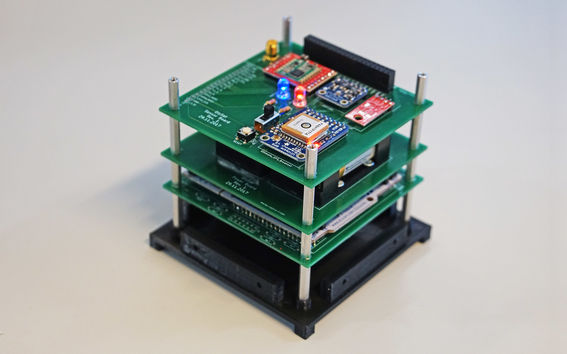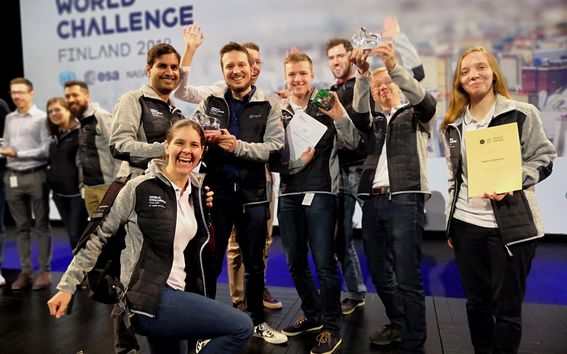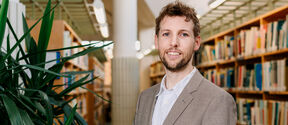Educational satellite won a spot in the International Space Station

Through amateur eyes, KitSat presented by Tessa Nikander and Samuli Nyman does not immediately resemble a satellite. It is the size of a coffee package, equipped with a flashing light and charged by USB cable joined to a laptop computer.
‘This unit is still missing the satellite’s outer casing and solar panels. KitSat is built in a similar way to other Aalto satellites, but its components have been selected so that even a child is able to weld them together’, Nyman explains the idea behind KitSat.
In addition to lights which indicate charging, KitSat has a camera, GPS, Bluetooth connectivity, a radio, an air pressure gauge, and an acceleration meter. Its first version was assembled in the Avaruusrekka space exhibition, a space truck travelling around the country to celebrate Finland’s 100th anniversary, in which the youngest assemblers were only five years old.
Soon anyone can test their skills, as the drawings, materials list and programming instructions of educational satellite KitSat are published on the web, to coincide with the launch of Finland 100 satellite planned for mid-November. If assembling does not interest you, KitSat can also be ordered pre-assembled.
‘Then you can focus more on programming and operating the satellite’, Nikander explains.
‘We have created educational material which can be used to simulate space flights. Instead of schoolchildren programming things on the screen, they can program the satellite to do different things. We believe that all Finnish schools offering basic education need their own satellite. Even science centers have been enthusiastic about this’, Nyman says.

Special shelving location
In August Nikander and Nyman won a special prize with their team in the UN International World Challenge Finland innovation competition, which was looking for inventive services using satellite data. The award was granted by Space Nation, well-known particularly for the application, with which anyone can practice astronaut skills on their phone. The company’s business ventures also include renting out tens of thousands of euros worth of storage spaces in the altitude of nearly 400km in the International Space Station.
‘Space Nation has rented a shelf there, where you can send basically anything. We won a spot for KitSat which carries a similar Turku University RADMON radiation monitor as the Aalto-1 satellite,’ Nyman says.
Getting the radiation monitor to the international space station is a significant step because it allows the students to compare the radiation data from the surface of the Earth and from space. But what can you do with your own KitSat, if you do not have tens of thousands of euros in your back pocket?
‘The mission of the KitSat built in the Avaruusrekka space exhibition was carried out by a weather balloon’, Nyman reveals.
‘You can fly the satellite with a drone, or a child can grab it and run a short distance away. The most important thing is to obtain distance: in terms of remote operation, it is not so important whether it is 100m or 100km.
Creativity can also be used in the planning of the satellite's exterior. Nyman and Nikander encourage experimentation: wood or even milk cartons can be used as the building material.
‘We have also planned to make a 3D model of our own casing, which can then be printed with a 3D printer and used as housing for satellites’, Nikander promises.
More information:
Samuli Nyman
samuli.nyman@aalto.fi
Tessa Nikander
tessa.nikander@aalto.fi
In the picture the KitSat team, Tessa Nikander and Samuli Nyman on the right.
Read more news

A new way to measure contagion: the gut bacterium behind blood poisoning can spread like influenza
Neither the antibiotic-resistant nor the highly virulent strains are the most transmissible.Tonmoy Saha Presents Textile Recycling Research at CIMANET Seminar
The CIMANET Research Seminar, held under the theme “Future Leaders in Circular Materials Bioeconomy,” took place on Thursday, December 4, at the Scandic Marina Congress Center in Helsinki.
Textile Chemistry Group Meeting Held
The Annual Meeting of The Textile Chemistry Group held on Thursday, December 11, uniting researchers, doctoral candidates, master’s students, and interns to present their advances in sustainable textile technologies.






